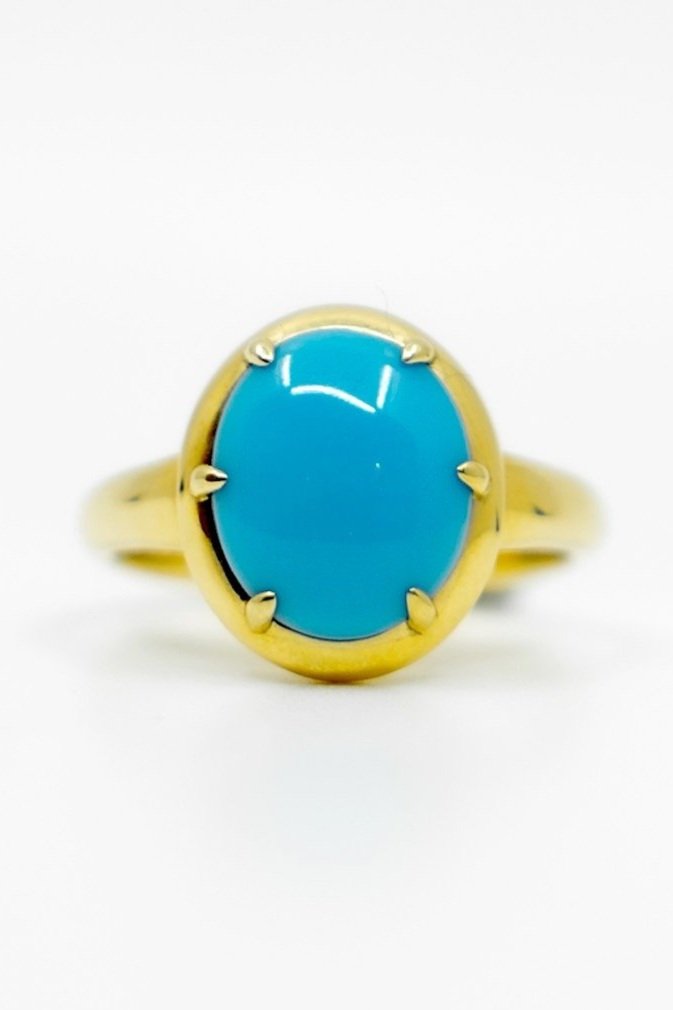Turquoise is one of the world’s most ancient gems. Archaeological excavations revealed that the rulers of ancient Egypt adorned themselves with turquoise jewelry, and Chinese artisans were carving it more than 3,000 years ago. Turquoise is the national gem of Tibet, and has long been considered a stone that guarantees health, good fortune, and protection from evil.
Throughout the centuries, the intense sky-blue Iranian turquoise, known as “Persian turquoise,” has been the most sought after. This is a clear, even blue colour with no evidence of green, nor any signs of black veins. As recently as the ‘70s, top-quality turquoise was fetching prices of $2,000 for a 15x20mm piece. Hard to believe?
Persian Turquoise comes from a number of mines in modern day Iran. The stones from all mines show a great colour variation. Many mines were worked around Nishapur, 225 miles east of the southern end of the Caspian Sea, close to old caravan routes. Persian turquoise has been highly coveted in the middle east for centuries. Firm evidence exists that these mines were heavily worked beginning in the10th century, but there is also evidence that some of the mines near the surface may have been exploited as early as 2100 B.C. Persian Turquoise has been used in jewelry for thousands of years and will most likely continue to be used for thousand of years more.
Did you know that no English gentleman of the 17th century was regarded as well dressed or well adorned unless he wore jewelry of turquoise? This stone was so highly valued that all 79 of the emeralds in the crown that Napoleon I gave his consort Empress Marie Louise were replaced with Persian turquoise cabochons.
Sources:
“Persian or Iranian Turquoise.” Durango Silver Company, www.durangosilver.com/persianturquoisemines.htm.
“Turquoise History and Lore.” Gemological Institute Of America, www.gia.edu/turquoise-history-lore.

